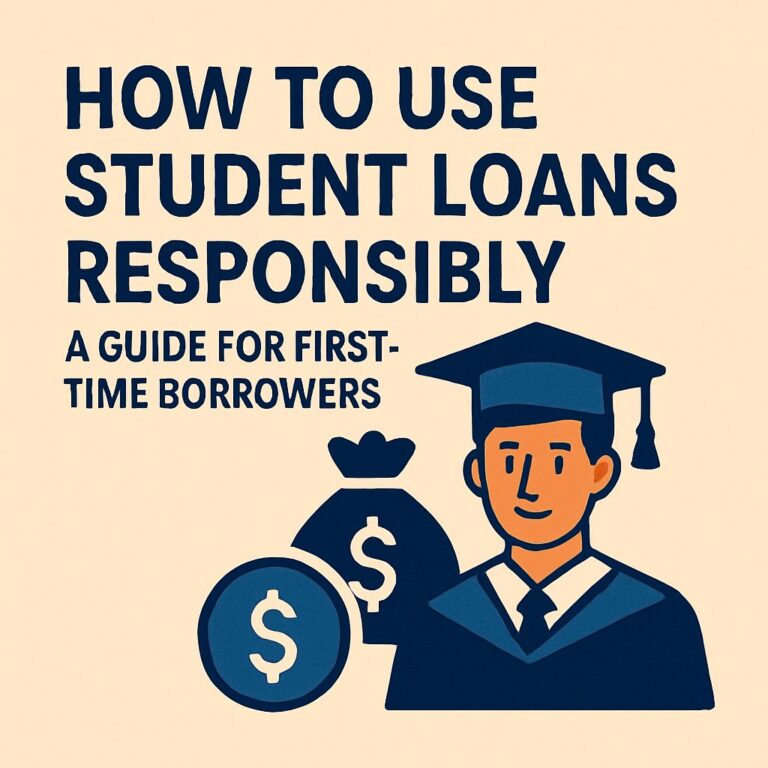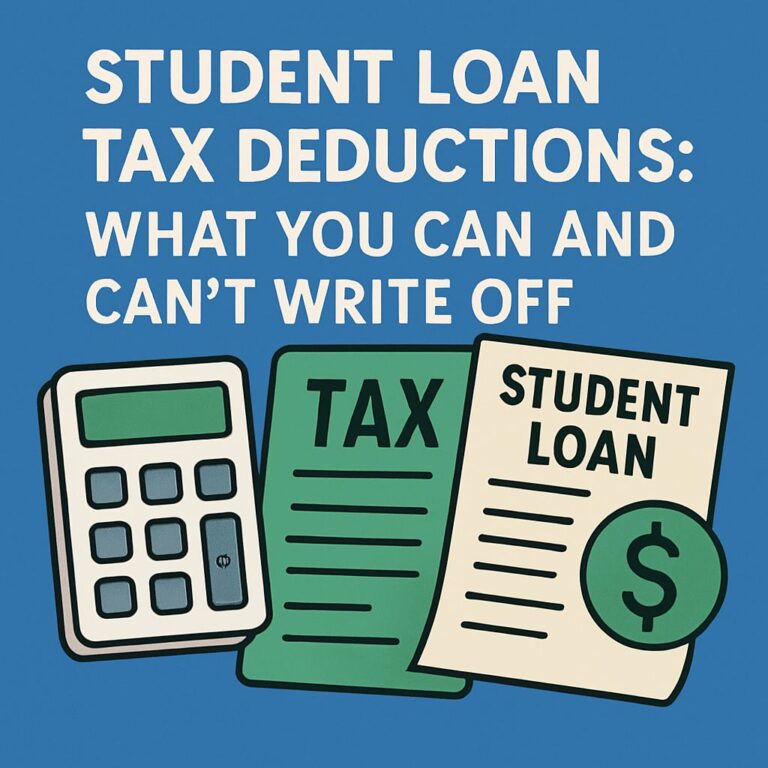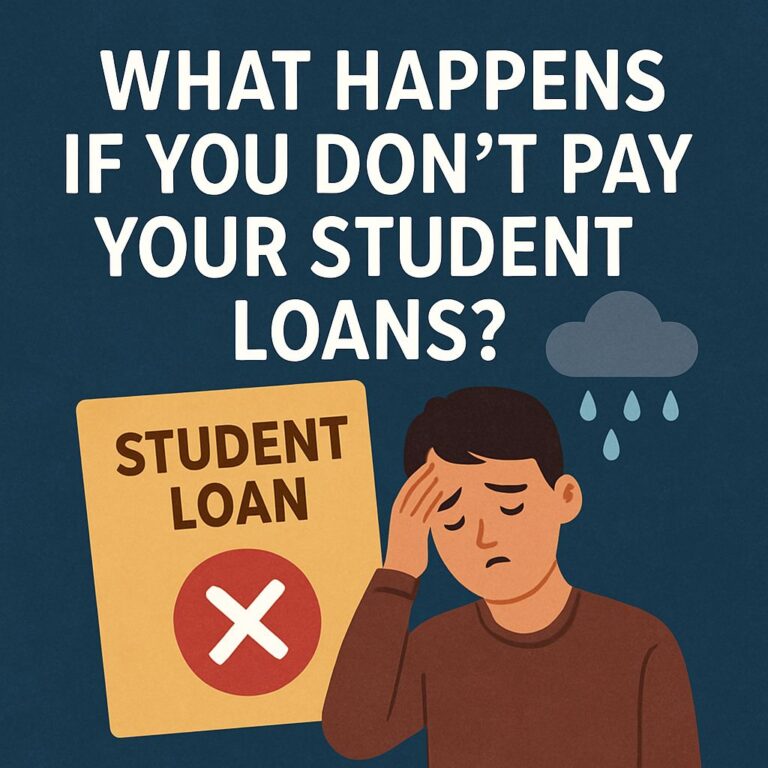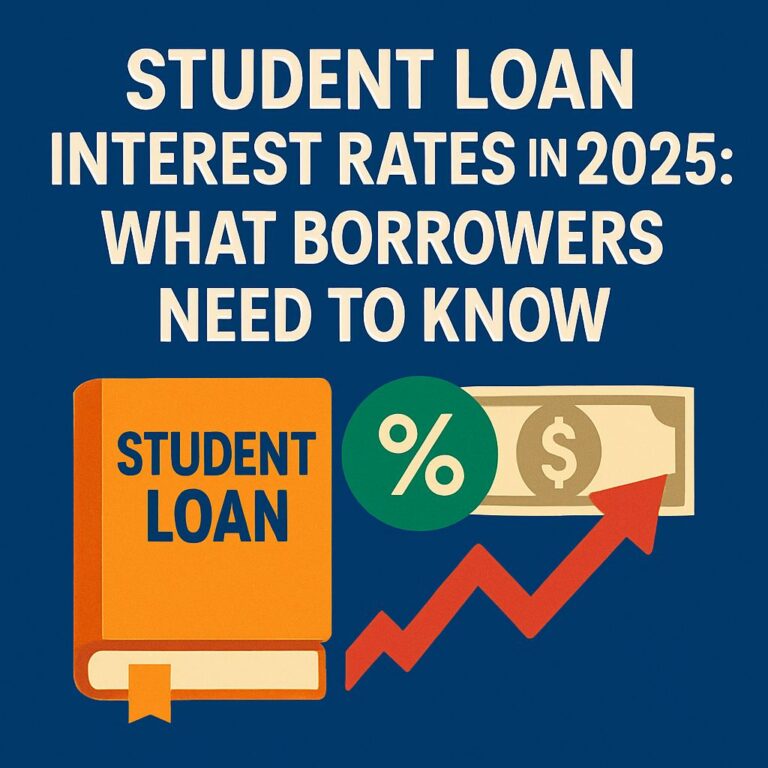What to Do If You Can’t Pay Your Student Loans
For many Americans, the day student loans come due is met not with celebration, but with anxiety. If you’re struggling to make ends meet and can’t afford your student loan payments, you’re far from alone. Millions of borrowers across the U.S. are facing the same financial dilemma — and not because they’re irresponsible or lazy, but because the cost of education, rent, groceries, and life itself has skyrocketed.
If your student loan bills are piling up and you’re feeling overwhelmed, take a deep breath. There are options. You’re not doomed to default, and you’re not a failure for struggling.
This guide is here to walk you through what to do, step by step, when you find yourself unable to pay your student loans.
Step 1: Don’t Ignore It — Take Action Early
First things first: do not ignore your loans.
Student loans don’t magically go away, and falling behind can have serious long-term consequences — including damaged credit, wage garnishment, and even losing access to certain government benefits.
The earlier you take action, the more options you’ll have. Even if you can’t pay anything right now, communicating with your loan servicer shows responsibility and keeps your options open.
Step 2: Know Your Loan Type
Not all student loans are created equal. Your available options largely depend on whether you have:
-
Federal Student Loans (e.g., Direct Loans, Stafford, PLUS)
-
Private Student Loans (from banks, credit unions, or private lenders)
This article primarily focuses on federal loans, which offer more flexibility. If you have private loans, don’t worry — we’ll touch on those too.
You can check what type of federal loans you have by logging into your account at studentaid.gov.
Step 3: Explore Income-Driven Repayment (IDR) Plans
If you have federal loans and can’t afford your current monthly payments, an Income-Driven Repayment (IDR) plan might be your lifesaver.
These plans adjust your monthly payment based on your income and family size — and in some cases, your payment could be as low as $0/month.
Popular IDR Plans Include:
-
SAVE Plan (formerly REPAYE)
-
PAYE Plan
-
Income-Based Repayment (IBR)
-
Income-Contingent Repayment (ICR)
Under these plans, any remaining balance is forgiven after 20 or 25 years — and forgiveness after 10 years is possible through Public Service Loan Forgiveness (PSLF) for qualifying careers.
How to Apply:
Log into your loan servicer’s portal or go to studentaid.gov/idr to submit an IDR application online.
Step 4: Consider Temporary Relief (Deferment or Forbearance)
If your situation is truly temporary — like you lost your job, have medical issues, or just need a few months to get back on your feet — you might qualify for deferment or forbearance.
✅ Deferment:
-
You may not owe interest during deferment if you have subsidized loans.
-
Common reasons: unemployment, economic hardship, returning to school.
✅ Forbearance:
-
Interest continues to accrue on all loan types.
-
Usually granted for up to 12 months at a time.
Warning: While these options provide short-term relief, interest continues to build — so use them wisely.
Step 5: Refinance (If You Have Private Loans)
If your student loans are private, you won’t have access to IDR or federal protections. However, you may be able to refinance to get a lower interest rate or more manageable payment terms.
Before You Refinance:
-
Check your credit score — better scores = better rates.
-
Shop multiple lenders — use tools like Credible or SoFi to compare.
-
Be aware that refinancing federal loans makes them private — and you’ll lose IDR, deferment, and PSLF eligibility.
If your income is unstable or uncertain, refinancing isn’t always a smart move. Talk to a financial advisor if you’re unsure.
Step 6: Check Eligibility for Forgiveness or Discharge
Depending on your situation, you may qualify for loan forgiveness, cancellation, or discharge. These aren’t pipe dreams — they’re real options for certain borrowers.
You Might Qualify If You:
-
Work in public service (PSLF)
-
Are permanently disabled (TPD discharge)
-
Experienced a school closure
-
Were misled by your school (borrower defense)
-
Have been making IDR payments for 20+ years
How to Explore These Options:
Visit studentaid.gov/manage-loans/forgiveness-cancellation for a breakdown of all available forgiveness programs.
Step 7: Prioritize Your Financial Health
When money is tight, it can be tempting to put your entire paycheck toward your loans just to keep collectors at bay. But that’s not always smart.
If you’re struggling to afford basic needs like food, housing, utilities, or healthcare, your first priority should be survival, not student loan repayment.
Create a bare-bones budget, track every dollar, and only pay what you reasonably can. Seek help from nonprofit credit counseling agencies like NFCC.org for free or low-cost advice.
Step 8: Avoid Student Loan Scams
When you’re in financial distress, you become a prime target for scammers. Be skeptical of any company that promises:
-
“Instant loan forgiveness”
-
“Elimination of your student debt for a fee”
-
“Exclusive access to programs”
You NEVER need to pay a third party to apply for IDR, forgiveness, or deferment — these are all free through the government or your loan servicer.
Stick with official sources like:
-
Your loan servicer’s official website
-
Accredited nonprofit counselors
Step 9: Stay in Touch With Your Loan Servicer
Even if you can’t pay a dime right now, communicating with your loan servicer is critical. They can:
-
Help you apply for hardship plans
-
Explain options based on your loan type
-
Prevent delinquency or default from damaging your credit
Avoiding their calls or tossing their letters won’t make the problem disappear. A 5-minute phone call today could save you months of stress down the road.
Step 10: Remember — You’re Not Alone
Financial struggles can be isolating and deeply emotional. It’s easy to feel like you’re drowning while everyone else seems fine. But the reality is this:
Over 43 million Americans have student loans.
Nearly 20% of them are in default or serious delinquency.
That means millions of people — just like you — are trying to find their way through this system. You are not alone, and help is out there.
Whether it’s a federal relief option, a budgeting coach, or just someone who gets it, support is available.
Final Thoughts
Not being able to pay your student loans is terrifying — but it doesn’t mean your life is ruined. You have rights, protections, and pathways forward. From income-driven plans and deferment to forgiveness and refinancing, there are real, legal ways to manage this burden.
The key is to act, not hide.
You’ve already taken the first step by reading this guide. Now it’s time to pick one action — just one — and move forward. Whether it’s logging into your servicer’s site or calling to request an IDR application, that small move can change your financial future.
You don’t have to do everything at once. But you do need to start.
Resources:




